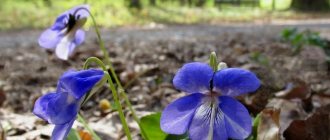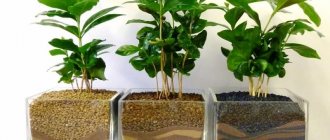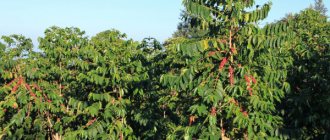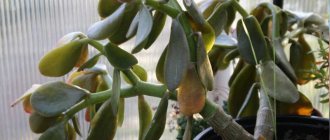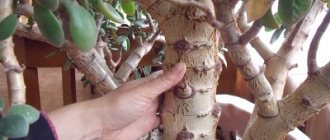The coffee tree (Coffea) is an evergreen tree plant that belongs to the Rubiaceae family. The plant produces rich burgundy fruits with seeds and grains. Such a tall shrub in the wild can reach a height of 8 to 10 m. Opposite large leaf plates are leathery to the touch. The color of the inflorescences is cream or white. In cultivation, the plant is shortened to a height of 150 to 250 cm. This makes it much easier to care for and harvest.
This shrub is native to tropical Ethiopia. It has an average rate of growth and development, with its annual growth being 50–100 mm per year. The lifespan of such a perennial is directly related to how favorable the climatic conditions are for its growth. Science knows of coffee trees that are more than 100 years old, and they never stop bearing fruit.
Flowering of this plant is observed in April–October. After this, fruits are formed on the branches, which can be eaten. The coffee tree blooms and bears fruit for the first time at the age of 3–4 years.
Brief description of cultivation
- Temperature . In the spring-summer period - from 20 to 30 degrees, and in winter - from 12 to 15 degrees.
- Air humidity . Should be increased (approximately 70 percent).
- Illumination . Supplementary lighting or diffused sunlight. The best option for the plant is a western or northern window sill.
- Watering . The substrate is moistened with well-settled softened water. In the warm season, watering is carried out once every couple of days (at least), and in the winter months - after the top layer of the soil mixture has dried.
- Substrate . Should be slightly acidic. A high-quality drainage layer is made at the bottom of the pot.
- Fertilizer . Fertilizing with organic fertilizer is carried out once every 15 days. At the same time, mineral fertilizers are added to the substrate once every 2 weeks.
- Transplant . It is carried out only when the roots no longer fit into the pot (approximately once every 3 years).
- Reproduction . Seed and vegetative methods.
- Features of care . The plant reacts extremely negatively to even a small draft and stagnation of moisture in the roots. In winter, the bush needs rest, and it is removed away from operating heating devices.
Coffee tree: how to properly care for and replant
Where are the plantations?
Coffee plantations are located in equatorial countries. The trees grow on the African continent, Madagascar, Central and South America, southeast Asia, and Australia.
Coffee trees do not do well in the constant heat of tropical climates. Therefore, they are planted on high mountain slopes with soil of volcanic origin. The optimal height is 1-2.5 thousand m above sea level.
Exposure to the scorching sun is detrimental to plantations. Therefore, in addition to coffee plants, tall trees with a dense crown are planted. Read more in the article “Where Coffee Really Grows.”
Caring for a coffee tree at home
Temperature
In indoor conditions, the coffee tree develops best and grows at an air temperature of about 23 degrees. However, if the room temperature is higher than this value, the plant will not be harmed; the main thing is to monitor the optimal level of air humidity.
In winter, the bush should rest. To do this, it is transferred to a cool place - from 12 to 15 degrees.
Air humidity
During the hot and dry summer months, coffee is moistened every day from a spray bottle with well-settled soft water. Once every 30 days, it is recommended to use an ash infusion to spray the bush, which is used to prevent the occurrence of diseases and pests. In the cold season, it is highly not recommended to moisten the foliage. Spraying is carried out only if the bush is standing next to a working heating device.
Illumination
The domestic coffee tree is not light-loving. It does not need direct sunlight, so northern and western windows are ideal for growing it. If necessary, the bush can be placed not on the window, but near it.
However, if the coffee is constantly in the shade, this may cause a lack of flowering. In this case, he needs to provide additional lighting.
Watering
The coffee tree is an exotic tropical plant. But despite this, it reacts negatively to excessive watering and stagnation of water in the pan. However, the plant can also be harmed by drying out the earthen ball in the pot.
If you notice that the foliage on the branches has drooped, then this is a sign that the plant needs urgent watering. If the bush does not receive moisture, it may die, and it will be extremely difficult to save it.
In winter, the bush is watered approximately once every 7 days. Moreover, the substrate is moistened only after its top layer has dried.
Choosing a pot
When choosing a container for transplanting coffee, you must first of all rely on the size of its root system. If the bush grew in a small pot, then it cannot be immediately transplanted into a very spacious container. Ideally, the volume of the container when transplanting should be larger than the clod of earth with a root system by only 20–40 mm. If the pot is larger, this will lead to rapid acidification of the substrate and the appearance of rot on the root system.
Substrate
For such a crop, a slightly acidic clay soil mixture with the addition of organic matter is best suited. For planting, you can use a purchased universal soil mixture. If desired, the substrate can be prepared with your own hands; to do this, mix peat, garden and humus soil with river sand, taking all components in equal parts.
Be sure to make a good drainage layer at the bottom of the container. It will help prevent fluid stagnation in the root system. In addition to the soil mixtures described above, you can use store-bought substrate for azaleas or gardenias for replanting coffee.
Fertilizer
During the growing season, the plant needs a regular supply of additional nutrients. Timely feeding will ensure proper growth and development of the bush, while its foliage will be dense and fruiting will be abundant.
Feeding scheme recommended by experts:
- In March–May, nitrogen-containing fertilizer is added to the substrate. Next, one fertilizing is carried out with minerals and one with organic matter.
- In summer, fertilizing is carried out once every 1.5 weeks. For this purpose, monosubstituted potassium phosphate is used. At this time, organic fertilizers are not applied.
- In September, the plant is provided with foliar feeding with potassium salts.
In addition, the substrate should be regularly shed with acidified water once every 30 days: 1 g of citric acid is dissolved in 1 liter of water.
Replanting a coffee tree
If the coffee tree grows in the same container for a very long time, this may cause a deterioration in its development. That is why timely replanting is the key to abundant flowering and good fruiting.
After the bush is removed from the old pot, inspect its root system. Remove all dried and rotten roots. After this, the bush is planted in a new container filled with fresh soil mixture. Please note that after planting, the root collar of the plant should rise 0.5–0.7 cm above the surface of the substrate. Carefully fill all voids with new soil mixture.
After the transplant is completed, the substrate in the pot is well moistened with melted or settled water, which should be slightly warm. After a couple of days, the surface of the soil mixture must be loosened to ensure light moistening of the soil mixture and to prevent stagnation of moisture in the roots.
COFFEE TREE CARE AND TRANSPLANTING
Trimming
If desired, such a shrub growing at home can be systematically pruned. This will help give the crown the desired shape. If you want to grow a standard tree, then it is better not to prune the plant at all, because often after pruning the growth of shortened branches stops.
Most often, intensive branching of coffee is observed after the height of the bush is 0.5–0.8 m, and therefore the standard type is formed independently without the intervention of the grower. If the coffee tree is formed in the form of a bush, then to give the crown the desired shape, you should pluck out excess shoots.
Bloom
From April to October, the indoor coffee tree experiences a period of flowering and intensive growth. At this time, small inflorescences consisting of 4–6 white flowers are formed in the leaf axils. They have a pleasant, unobtrusive aroma that is similar to jasmine.
Please note that flowering is observed only in adult specimens. If you take good care of the plant and provide it with a dry winter, then most likely the first flowers will form on the branches in the third or fourth year of growth.
Rest period
Around October, the shrub begins a dormant period, for which it needs to create certain conditions. Rules for caring for the plant during the dormant period:
- the air temperature in the room must be within 12–15 degrees;
- the substrate in the container is moistened only after its top layer has dried well;
- The bush should be in the shade, but it needs to be illuminated every day for several hours.
In the last winter or first spring weeks, the coffee tree is moved to a warmer place. At the same time, bright sunlight is contraindicated for him at this time.
How long can I leave it without care?
If you urgently need to leave for a while, then in order to prevent the death of the coffee tree, you must first prepare it:
- It is necessary to cut off all flowers or fruits. The fact is that the plant spends a large amount of moisture on them.
- Pinch young shoots, which will stop their growth for a while.
- Before leaving, it is recommended to place the pot with the bush on a foam mat, which is located in a container of water. Please note that the drainage holes at the bottom of the container should not be very tightly plugged with foam pieces.
In addition, if possible, you can install an automatic watering device. Thanks to it, the bush will be provided with systematic access to water for 15–20 days.
Transfer
For the first couple of years, coffee can be replanted annually. This should be done in early spring, before the active growing season begins. Then the plant needs to be replanted less often - once every two years. Considering that the tree has a well-developed root system, care should be taken to ensure that the planting container (pot) is deep enough, and the diameter should be increased by 2-4 cm each time.
Naturally, each transplant will be accompanied by a change of soil. It is better to choose a ready-made one suitable for growing tropical plants. The soil must be slightly acidic, rich in phosphorus and organic matter. It is good to arrange drainage at the bottom.
You can make the soil yourself. Ordinary garden soil should be mixed with peat, humus and river sand in equal proportions. For balance, it's good to add a handful of wood ash.
The plant forms its crown on its own and it is better not to interfere with this process unless absolutely necessary. The exception is the excessive stretching of the tree in height, when it no longer fits in the proposed space. In this case, you will have to adjust the shape.
Reproduction methods
Growing from seeds
If desired, a coffee tree can be grown from seeds indoors. Only freshly harvested seed material is suitable for this. The older the seed, the less likely it is for a seedling to emerge.
The substrate for sowing is loose and well-permeable to water. For example, you can use river sand mixed with leaf soil. Before starting sowing, the substrate is sterilized: for this purpose it is sterilized for 10 minutes. kept over the steam of boiling water.
The seed material is not buried, it is laid out on the surface of the soil mixture. Otherwise it may rot. The seeds should be placed flat on the surface of the substrate. Next, the crops are watered with slightly warm water. The top of the container is covered with glass or film. It is necessary to ventilate the crops regularly: to do this, the shelter is removed for three hours with a frequency of 2 times every 7 days.
25 degrees is the optimal temperature for the emergence of seedlings. In this case, the appearance of the first shoots may not occur earlier than 6–8 weeks after sowing. After the seedlings have developed several true leaf blades, they can be picked. The first fruiting of a bush grown from seeds is observed in the third or fourth year of growth.
How to grow a COFFEE TREE at home ☕
Cuttings
Last year's branches are used to prepare cuttings, and there should be 2 nodes on each segment. Before planting, the cuttings are kept in a Heteroauxin solution for several hours. Then they are planted in a mixture consisting of 1 part peat and 1 part sand. The sections are buried 30 mm into the substrate. Don't forget to make a good drainage layer at the bottom of the container.
The cuttings should be provided with the same air temperature and the same watering regime as when sowing the seeds. In order for the cuttings to grow roots faster, they need bottom heating of the container.
After the cuttings begin to grow and young leaf plates emerge from the buds, they can be planted in a permanent pot. Such bushes will bear fruit for the first time already in the second year of growth.
Coffee tree growing and propagation at home
How to grow from grain
Compared to growing from a cutting, it will take longer for a sprout to appear. It is necessary to purchase grains from a specialized store that sells exotic planting material of optimal quality. It is important to find fresh fruit that can be used for planting.
Important aspects:
- The seeds are soaked in a growth stimulator for 12–24 hours.
- Freshly picked coffee beans undergo scarification.
- The container for planting can be a plastic container or a pot.
- Purchase soil for citrus plants.
- Drainage (crushed stone, pebbles, small stones) is poured into the bottom of the flowerpot, then the substrate.
- The soil is moistened with warm, settled water.
- Sow the seeds, place the flat side on the ground and deepen it a little.
- Cover with a glass lid and cling film - set up a mini greenhouse.
- Place in a bright and warm place.
- Periodically check for germination.
- Ventilate the plant, removing any condensation that has formed.
- If necessary, moisten the soil.
- 20–30 days after the sprout appears, the film is removed. Plants that have stretched 50–70 mm need to be replanted. The first harvest will be in 2 or 3 years, subject to proper maintenance.
Seed preparation
Process steps:
- The seed is purchased in a specialized store, and after purchase it is prepared for planting and further growth.
- Coffee beans are soaked in a jar of warm filtered water for a day; only those that lie at the bottom and do not float up are taken for planting.
- If the fruits were picked directly from the coffee tree, then scarification is necessary.
- For better and faster germination, it is useful to treat seeds with growth stimulants.
- Prepare the soil: experienced gardeners recommend using a ready-made substrate.
- Do not forget to put drainage at the bottom of the container: crushed stone, pebbles, walnut shells.
- For planting, use settled water at a temperature of +30 C.
- The grains are placed on moist soil with the flat side and slightly deeper (1 cm).
- Cover with cling film and place the container in a room where there is enough light and heat.
- Regularly inspect the crops, ventilate them if necessary, remove condensation, and moisten the soil.
- After 1 month, shoots should appear.
Scarification
If the fruits were taken from a coffee tree, then it is necessary to carry out scarification for better germination. The point is to destroy the dense shell of the grain. A mechanical or chemical method is used.
Important processing details:
- Mechanical - damage to the outer layer using a grater, knife, or fork. The method is considered the best.
- Chemical - a weak solution of one of the acids is used: sulfuric or hydrochloric, but it is important to know the exact concentration according to the instructions, otherwise the planting material will deteriorate.
Priming
For planting, it is better to purchase a ready-made substrate from well-known manufacturers.
Basic soil requirements:
- Contains the necessary chemical elements.
- Corresponds to a certain pH level.
- It has a fairly loose consistency.
- The substrate must not be expired.
On a note! You can make your own soil mixture. To do this, you need to take: sand, garden soil, peat, humus in equal quantities, add a little wood ash.
Landing rules
Basic Rules:
- use the appropriate substrate;
- drainage (small pebbles or gravel) is placed at the bottom of the pot in a layer of 10–20 mm;
- for watering and spraying, take warm, settled water;
- Before planting, grains are soaked in water, scarified, and treated with a growth stimulant;
- cuttings sections are also kept in phytohormones;
- seeds are placed on moist soil, deepened 1 cm;
- the twig is stuck into the ground 2–3 cm;
- cover with a thin transparent film or a jar of the optimal size - this is a kind of greenhouse;
- put in a warm (+25°C), bright place;
- every 2–3 days they inspect, ventilate the greenhouse, remove condensation from the container;
- water and spray as necessary;
- After about a month, the plant is opened and the film is removed.
Possible problems
If there are violations in the care of the coffee tree, problems may arise such as:
- Darkening and drying of the edges of leaf plates . The air in the room is excessively dry.
- The foliage turns yellow . The root system has rotted.
- Brown spots form on the leaf blades . Nitrogen deficiency in the substrate.
- The appearance of holes on the leaves . This occurs as a result of sunburn.
- Young foliage turns yellow, while the veins are colored green . The substrate is not acidic enough.
- The foliage turns yellow, begins to rot and flies off . Moisture regularly stagnates in the soil mixture.
- Flying leaves in winter . The shrub feels an acute lack of light.
- Excessively slow growth . Lack of nutrients in the soil mixture.
- The foliage becomes wrinkled and yellow spots form . Potassium deficiency or soil mixture is moistened with hard water.
- The leaf blades are covered with brown or purple spots . The phosphorus content in the substrate is too low.
- Young foliage is pale yellow and very small . This is how iron deficiency manifests itself.
- The most common pests that inhabit the plant are mealybugs, scale insects and spider mites.
Diseases and pests
The most dangerous pests for coffee are:
- Spider mite. If an insect is detected, the plant must be immediately treated with Aktara or Karbofos.
- Shield. To get rid of this pest, the plant is first treated with soapy water and then with insecticides (for example, Karbofos).
- Aphid. They fight it in the same way as with scale insects. This pest can still be removed using regular alcohol. Dampen a cotton pad and wipe the infected leaves and shoots with it.
The most common diseases are Coffee Rust, Gommosis and Sooty Fungus . Diseases manifest themselves in different ways, but most often the leaves are affected. They become covered with brown spots and streaks, or have a black edge.
For fungal diseases, it is better to immediately use fungicides. The fungus is usually very tenacious, and traditional methods may not help. Fitosporin and copper sulfate are effective. It is also necessary to remove the affected parts of the plants to prevent the spread of the disease.
IMPORTANT! Regular preventive inspection of the plant will protect it from 99% of diseases and pests. It is always much easier to prevent a disease than to try to cure it.
Types of coffee trees
Below we will describe those varieties of coffee trees that are most popular in indoor cultivation.
Arabian coffee tree (Coffea Arabica)
This variety is popularly known as Arabica. In the wild, the bush reaches six meters in height. In indoor culture, its dwarf variety “Nana” is grown, the height of the bush does not exceed 0.8 m. Flowering is observed twice a year. The bush can be easily shaped.
Congolese coffee tree, or Robusta (Coffea canephora)
The variety is unpretentious and has a well-developed root system. A characteristic feature of this variety: after the fruit branches die naturally, they fly away.
Liberian coffee tree (Coffea liberica)
This tall and fairly large shrub has a pyramidal-shaped crown. It can be grown both in a spacious room and in a greenhouse. The variety is highly resistant to most diseases of coffee trees.
Trimming Features
The plant can be pruned at any time of the year, as needed. Remove dry or diseased branches and leaves.
The tree also needs formative pruning, which allows it to be given a certain neat and beautiful shape. Formative pruning is not done in the first year.
Beneficial features
The coffee tree seeds contain valuable microelements and substances. In this case, caffeine is considered the most famous and active substance. Caffeine-based drugs and drinks are produced that have an exciting, stimulating and tonic effect. They are used in the treatment of fatigue, headaches, nervous exhaustion and other diseases. Coffee has a rich, unique aroma and taste, which is why it is widely used in cooking for preparing a variety of drinks, ice cream, desserts, and baked goods.
Coffee tree - secrets of growing at home.
An evergreen tree with a tropical scent
The coffee tree is an evergreen plant of the Rubiaceae family. His homeland is the tropics. In the so-called “coffee belts” – the tropical parts of Asia and Africa – coffee is cultivated everywhere.
Interestingly, caffeine is not only found in beans. It is found in all parts of the plant. Depending on the variety, there may be a lot or little of it, but any coffee tree must have caffeine. Thanks to this substance, the plant repels many pests.
The coffee tree has more than 90 species. However, only a few of them are used directly to obtain the well-known drink. These are Arabian, Congolese, Cameroon and Bengal coffee plants.
Coffee in nature grows in the form of a large spreading shrub or low tree. A coffee tree at home looks more like a neat, upright bush. Thanks to its dark green glossy leaves, it looks aesthetically pleasing and is suitable as a house plant. In good conditions, the tree can grow up to two meters. So before boarding, you should make sure that the room is spacious enough for such a tenant.
The coffee tree begins to bear fruit after 3–5 years if it is properly cared for. From mid-spring to mid-autumn, the mature plant is covered in small white flowers with a strong tropical scent. To obtain bright red berries, each of which will produce two coffee beans, the plant must be pollinated by hand. Therefore, the easiest way is to leave it only a decorative function and go to the store for your favorite drink.
Homemade coffee tree humidifies the air well and purifies it.
Comments from experienced plant growers
Those who have been growing a coffee tree for many years have probably noticed that this plant gets so used to its place that if it is moved, it instantly sheds its leaves and stops blooming. This process can cause even the slightest rotation of the flowerpot.
Proper tree care leads to the fact that the plant from seeds blooms at home in spring and autumn. The interesting thing is that the tree blooms for a long time. The first flowers have already turned into long green seeds, and new flowers are just blooming. Every gardener strives to wait for the fruits, but the coffee tree will not lose color if the care does not follow the rules: the tree will not grow in a cramped flowerpot. And the edges of the leaves will dry out, since they will not have enough nutrients for nutrition.
Coffee tree grown from cuttings.
A domestic tree begins to “be capricious” if a lot of seeds have accumulated on it: it is better to collect them unripe and wait until they dry. Then peel, grind, and you can brew your own coffee.
You should not try to place other flowers next to the coffee tree. The plant does not like its neighbors and will instantly respond to this by changing the color and condition of the leaves.



